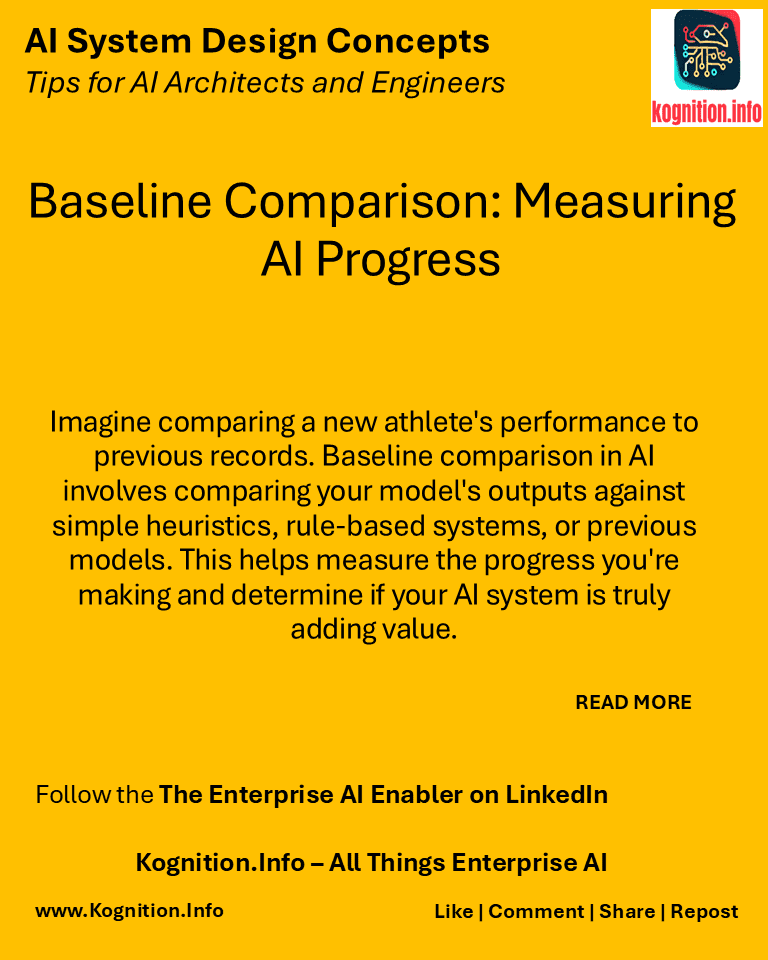
Imagine comparing a new athlete’s performance to previous records. Baseline comparison in AI involves comparing your model’s outputs against simple heuristics, rule-based systems, or previous models. This helps measure the progress you’re making and determine if your AI system is truly adding value.
Use cases:
- Evaluating model improvement: Assessing if a new model is significantly better than a previous version or a simpler approach.
- Justifying AI adoption: Demonstrating the value of using AI compared to traditional methods.
- Setting performance expectations: Establishing realistic performance expectations for your AI system.
How?
- Choose a baseline: Select a relevant baseline, such as a simple heuristic, a rule-based system, or a previous model version.
- Evaluate performance: Measure the performance of both your AI model and the baseline on the same dataset.
- Compare results: Analyze the differences in performance and identify areas where your AI model excels or falls short.
- Iterate and improve: Use the baseline comparison to guide further model development and improvement.
Benefits:
- Measure progress: Track the progress of your AI development efforts and demonstrate improvement over time.
- Justify AI adoption: Provide evidence that your AI system is adding value compared to simpler approaches.
- Set realistic expectations: Establish realistic performance expectations and avoid overhyping AI capabilities.
Potential pitfalls:
- Choosing an appropriate baseline: Select a baseline that is relevant and challenging enough to provide meaningful insights.
- Overlooking limitations: Acknowledge the limitations of both your AI model and the baseline.
- Focusing solely on metrics: Consider qualitative factors and user experience in addition to quantitative metrics.
